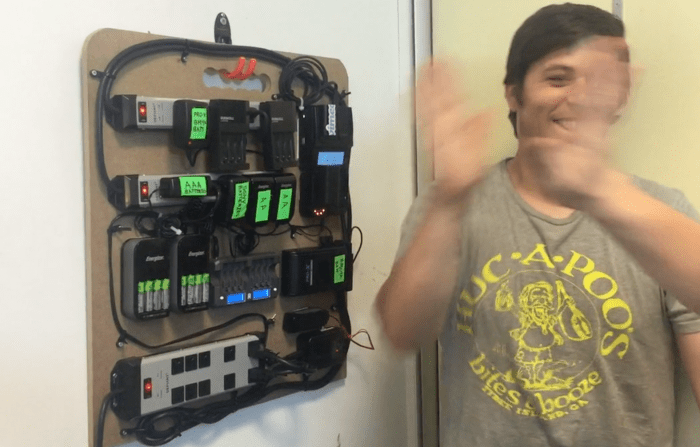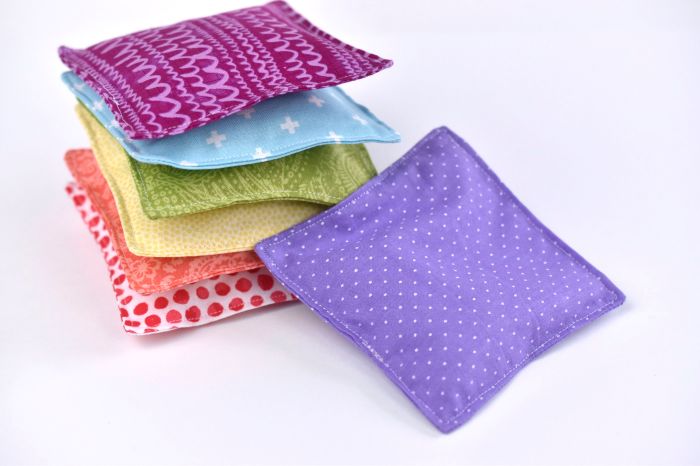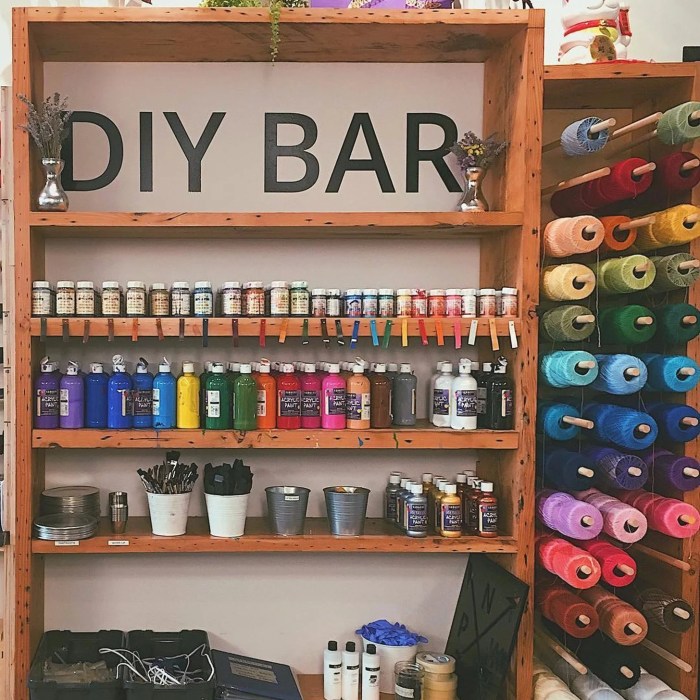DIY keyboards have become a popular hobby for tech enthusiasts and keyboard aficionados alike. Building your own keyboard allows for a level of customization that is simply impossible with pre-built options. From the choice of switches to the layout and even the case design, you can tailor your keyboard to perfectly suit your needs and preferences.
The world of DIY keyboards is a vibrant community filled with passionate individuals who share their knowledge, designs, and experiences. Online forums, social media groups, and even dedicated events bring together keyboard builders from all over the world, fostering a sense of camaraderie and collaboration. Whether you’re a seasoned keyboard enthusiast or just starting out, the DIY keyboard community welcomes you with open arms.
Advanced DIY Keyboard Techniques

Taking your DIY keyboard journey to the next level often involves venturing into the realm of custom design and manufacturing. This allows you to truly personalize your keyboard, crafting a unique masterpiece that perfectly suits your needs and preferences.
Designing and Manufacturing Custom Keyboard PCBs
Designing and manufacturing custom keyboard PCBs is a rewarding process that allows you to create keyboards with unique layouts, features, and aesthetics. It involves several steps, each requiring careful planning and execution.
- Circuit Design: Using software like KiCad or Eagle, you can create the schematic and layout of your PCB, specifying the location of components like switches, diodes, and controllers. You’ll need to consider the size and shape of the keyboard, the type of switches you’re using, and the desired features.
- PCB Fabrication: Once the design is finalized, you can send it to a PCB manufacturer to have it fabricated. There are various online services that offer affordable PCB production. The manufacturer will produce the PCB according to your design specifications, including the number of layers, material, and surface finish.
- Component Sourcing: After receiving your PCB, you’ll need to source all the necessary components, including switches, diodes, capacitors, resistors, and a microcontroller. You can find these components from online retailers or local electronics stores.
- Assembly: The final step is assembling the keyboard. This involves soldering all the components to the PCB, carefully following the design specifications. You’ll need to ensure proper connections and soldering quality for a functional keyboard.
Using 3D Printing for Custom Keyboard Parts
3D printing has revolutionized the DIY keyboard community, enabling creators to easily manufacture custom keyboard parts like keycaps, cases, and stabilizers. The process involves designing the desired part in a 3D modeling software and then printing it using a 3D printer.
- Design Flexibility: 3D printing allows for incredible design flexibility, enabling you to create parts with intricate geometries, complex shapes, and personalized features. You can design keycaps with unique profiles, cases with custom engravings, and stabilizers optimized for specific switch types.
- Material Options: 3D printers offer a wide range of materials, from plastics like PLA and ABS to more durable options like nylon and carbon fiber. You can choose the material that best suits your needs and aesthetic preferences.
- Prototyping and Customization: 3D printing is ideal for prototyping and customization. You can easily iterate on your designs, making adjustments and improvements before committing to final production.
Open-Source Hardware and the DIY Keyboard Community
Open-source hardware plays a crucial role in the DIY keyboard community, fostering collaboration, innovation, and accessibility. It refers to hardware designs and specifications that are freely available to anyone to use, modify, and distribute.
- Collaboration and Sharing: Open-source projects encourage collaboration and sharing of knowledge. Designers and hobbyists can contribute to existing projects, share their own designs, and learn from others.
- Innovation and Experimentation: Open-source hardware promotes innovation and experimentation. Developers can freely modify and adapt existing designs to create new and unique features.
- Accessibility and Affordability: Open-source hardware makes DIY keyboard projects more accessible and affordable. By using readily available designs and components, anyone can build their own custom keyboard.
Keyboard Software and Firmware

Keyboard software and firmware are essential components that enhance the functionality and customization of DIY keyboards. They provide a layer of abstraction between the physical hardware and the operating system, allowing users to control various aspects of their keyboard, such as key mapping, lighting effects, and macro programming.
Keyboard Software Applications
Keyboard software applications provide a graphical user interface for configuring and customizing keyboard behavior. These applications offer a range of features, from basic key remapping to advanced macro programming and lighting control.
- Key remapping: Allows users to assign different functions to keys, such as remapping the Caps Lock key to Ctrl or the Esc key to Backspace.
- Macro programming: Enables users to record and execute sequences of keystrokes, simplifying repetitive tasks.
- Lighting control: Provides options for customizing the keyboard’s backlight, including color, brightness, and effects.
- Layer management: Allows users to create multiple keyboard layouts, each with its own key mappings and functionality.
- Firmware flashing: Facilitates updating the keyboard’s firmware with new features or bug fixes.
Popular Keyboard Software Applications
Popular keyboard software applications include:
- QMK Toolbox: An open-source application designed specifically for QMK Firmware, offering comprehensive features for configuring and flashing QMK-powered keyboards.
- VIA: Another open-source application that supports a wide range of keyboard controllers and firmware, including QMK and ZMK. VIA provides a user-friendly interface for customizing keyboard layouts, key mappings, and lighting effects.
- AutoHotkey: A powerful scripting language that allows users to automate tasks and remap keys on Windows. AutoHotkey is highly customizable and can be used to create complex keyboard macros and scripts.
- Karabiner-Elements: A macOS application that provides advanced keyboard customization options, including key remapping, macro programming, and mouse button customization.
Open-Source Keyboard Firmware Projects
Open-source keyboard firmware projects allow users to access and modify the underlying code that controls their keyboard. This enables advanced customization and the development of unique features.
- QMK Firmware: A highly popular and customizable open-source firmware project that supports a wide range of keyboard controllers and key switches. QMK offers extensive features for key mapping, macro programming, lighting control, and more.
- ZMK Firmware: A modular and scalable open-source firmware project that emphasizes flexibility and ease of use. ZMK is designed for modern keyboards and offers a wide range of features, including support for Bluetooth connectivity and advanced lighting effects.
Resources for DIY Keyboard Enthusiasts: Diy Keyboards

The world of DIY keyboards is filled with passionate individuals eager to share their knowledge and creations. Online resources provide a wealth of information, inspiration, and support for keyboard enthusiasts of all levels. This section explores various resources that can help you learn, connect, and build your own custom keyboard.
Online Resources for DIY Keyboard Enthusiasts
The internet is a treasure trove of information and inspiration for DIY keyboard enthusiasts. Here are some of the most popular and valuable online resources:
- Websites:
- Keyboardio: A website dedicated to the development and promotion of ergonomic keyboards, including the popular Model 01 and Model 02. It features a blog, forum, and resources for building and customizing keyboards.
- Geekhack: A vibrant online community forum focused on mechanical keyboards, featuring discussions on all aspects of keyboard building, including switches, keycaps, and layouts.
- MechKeys: A website dedicated to mechanical keyboards, offering reviews, tutorials, and a marketplace for keyboard components.
- Keychron: A company known for its high-quality, budget-friendly mechanical keyboards. Their website offers a wide range of products, resources, and community support.
- Massdrop: A platform that facilitates group buys for a variety of products, including mechanical keyboards and components.
- Forums:
- Reddit: The /r/MechanicalKeyboards subreddit is a large and active community for discussing all things related to mechanical keyboards.
- Discord: Many online communities, including Geekhack, have active Discord servers where members can chat and share information in real-time.
- Tutorials:
- YouTube: A vast library of tutorials on building, customizing, and troubleshooting keyboards is available on YouTube. Many creators offer detailed step-by-step guides, product reviews, and tips for beginners.
- Online Blogs: Numerous blogs and websites offer comprehensive guides and tutorials on various aspects of keyboard building, from choosing components to soldering techniques.
Popular Keyboard Manufacturers and Their Products, Diy keyboards
Several manufacturers specialize in producing high-quality mechanical keyboards and components. Here’s a table listing some popular manufacturers and their notable products:
| Manufacturer | Products |
|---|---|
| Keychron | K2, K4, K6, K8, Q1, Q2 |
| Ducky | One 2 SF, One 3 SF, Shine 7, Year of the Tiger |
| Leopold | FC660C, FC750R, FC980C |
| Filco | Minila, Majestouch 2, Ninja |
| Corsair | K70 RGB MK.2, K95 RGB Platinum XT, Strafe RGB |
| Razer | BlackWidow, Huntsman, Viper Ultimate |
| Logitech | G910 Orion Spark, G Pro X, G513 Carbon |
Sourcing Components and Tools
Building a custom keyboard requires sourcing various components and tools. Here’s a guide to finding the essential items:
- Keyboards and Components:
- Mechanical Switches: Choose switches based on your preferred typing feel, sound, and actuation force. Popular brands include Cherry MX, Gateron, Kailh, and ZealPC.
- Keycaps: Keycaps come in various materials, colors, and designs. Popular brands include GMK, DSA, and XDA.
- PCB: The PCB houses the switches, LEDs, and other electronics. Choose a PCB based on your desired layout and features.
- Case: The case encloses the keyboard and provides a stable platform. Cases come in various materials, sizes, and designs.
- Stabilizers: Stabilizers help to smooth out the movement of large keys, such as the spacebar and shift keys.
- Tools:
- Soldering Iron: A soldering iron is essential for attaching components to the PCB.
- Solder: Solder is used to create electrical connections between components.
- Wire Strippers: Wire strippers are used to remove the insulation from wires.
- Wire Cutters: Wire cutters are used to cut wires to the desired length.
- Screwdriver: A screwdriver is used to assemble the keyboard case and other components.
The Future of DIY Keyboards
The DIY keyboard community is constantly evolving, with new technologies and design innovations emerging all the time. The future of DIY keyboards is bright, with exciting possibilities on the horizon. From advancements in switch technology to the integration of artificial intelligence, the DIY keyboard scene is poised for significant growth and innovation.
Emerging Trends in DIY Keyboards
The DIY keyboard community is constantly pushing the boundaries of what’s possible. Some of the emerging trends that are shaping the future of DIY keyboards include:
- Advanced Switch Technology: The development of new switch technologies, such as optical switches and linear tactile switches, is expanding the range of typing experiences available to DIY keyboard enthusiasts. These advancements offer improved responsiveness, durability, and customization options.
- Custom Keycaps: The demand for unique and personalized keycaps is growing, leading to a surge in the creation of custom keycap sets. These sets often feature intricate designs, vibrant colors, and specialized materials, allowing users to express their individuality through their keyboards.
- Wireless Connectivity: Wireless keyboards are becoming increasingly popular, offering greater flexibility and freedom of movement. The integration of Bluetooth and other wireless technologies is making it easier for DIY keyboard builders to create wireless keyboards that are both stylish and functional.
- Open-Source Software and Firmware: The open-source nature of many DIY keyboard projects allows for greater customization and community collaboration. Open-source software and firmware enable users to modify and enhance the functionality of their keyboards, pushing the boundaries of what’s possible.
The Impact of Artificial Intelligence and Machine Learning
Artificial intelligence (AI) and machine learning (ML) are poised to revolutionize the way we interact with technology, and DIY keyboards are no exception. Here’s how AI and ML are expected to influence keyboard design and customization:
- Personalized Typing Experiences: AI and ML algorithms can analyze typing patterns and preferences to create personalized keyboard layouts and settings. This can result in more efficient and comfortable typing experiences, tailored to each individual user.
- Adaptive Keyboards: AI-powered keyboards can adapt to different users and environments. For example, a keyboard could adjust its layout, key sensitivity, and lighting based on the user’s location, task, and even their emotional state.
- Predictive Text and Auto-Correction: AI and ML can enhance predictive text and auto-correction features, making typing faster and more accurate. These technologies can learn from a user’s typing habits and vocabulary to provide more relevant suggestions and corrections.
Predictions for the Future of DIY Keyboards
Based on the current trends and advancements in technology, here are some predictions for the future of DIY keyboards:
- Increased Accessibility: DIY keyboards will become more accessible to a wider audience, thanks to the availability of affordable components, online resources, and pre-built kits.
- Greater Customization: DIY keyboards will offer even greater customization options, with modular designs and advanced software allowing users to create truly unique and personalized typing experiences.
- Integration with Smart Home Technology: DIY keyboards will be seamlessly integrated with smart home ecosystems, allowing users to control devices, automate tasks, and enhance their overall productivity.
- Focus on Sustainability: The DIY keyboard community will embrace sustainable practices, using recycled materials, reducing waste, and promoting responsible sourcing.
The journey of building your own keyboard is a rewarding one, filled with creative exploration and technical challenges. From the initial design phase to the final assembly, each step offers a unique opportunity to learn and grow. The end result is a personalized keyboard that reflects your individual style and preferences, a testament to your creativity and dedication. Whether you’re looking for a keyboard that enhances your typing experience, adds a touch of personality to your workspace, or simply provides a fulfilling creative outlet, DIY keyboards offer an unparalleled level of customization and satisfaction.
Building your own keyboard can be a rewarding project, allowing you to customize every aspect of your typing experience. From choosing the keycaps to soldering the switches, it’s a journey of personalization. If you’re looking for another DIY project, you can try restoring your car’s headlights with a simple DIY headlamp cleaner. Just like with a custom keyboard, you’ll be amazed at the difference a little elbow grease can make.





